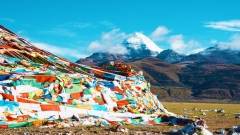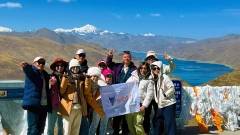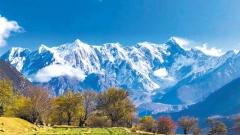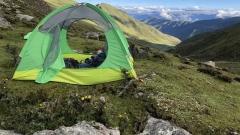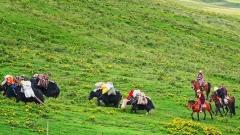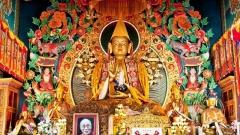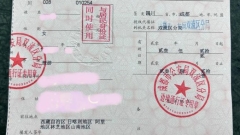Hidden high above the Sutlej valley, where the sky feels impossibly close and the earth folds into strange towers of compacted soil, lie the ruins of a kingdom that once shaped the culture and art of western Tibet. Known today simply as the Guge Kingdom ruins, this jagged silhouette of mud walls, faded frescoes and collapsed palaces stands as one of Tibet’s most haunting and photogenic archaeological sites. If you want to travel to Tibet Ngari , then the Guge Kingdom must be a place you cannot miss.
Why Guge Kingdom Matters?
The ruins of Guge crown a steep loess ridge near Zada (Zanda) county. Once a royal city with grand temples, crowded residential tiers and a palace complex dominating the hilltop, the site now survives as a maze of collapsed rooms, caves, and carved shrines blending into the golden hillside. Archaeologists and travelers alike are drawn to Guge not only for its dramatic setting but for what its walls still whisper: stories of a kingdom born during the fragmentation of Tibet’s imperial era, a center of art and Buddhism that thrived for centuries, and a civilization that — for reasons still debated — vanished from the map.
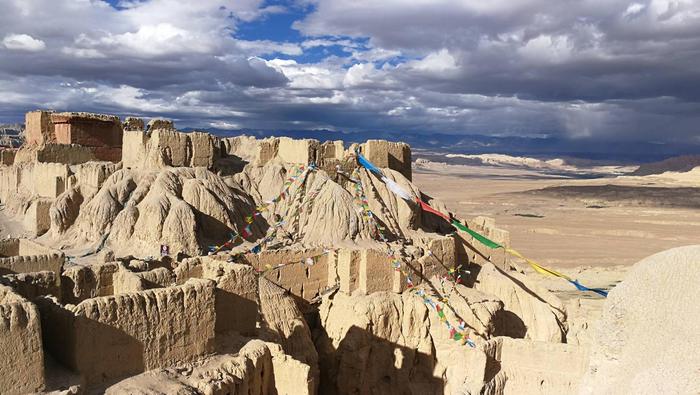
Guge Kingdom Ruins
Where to Find Guge Kingdom?
Guge’s remnants lie west of Zada town, near the village historically called Tsaparang. The site perches on a prominent earth hill along the Sutlej (locally called the Xiangquan) river valley. From the valley floor an upward path leads to the layered ruins; the ascent gains a few hundred meters and rewards climbers with sweeping panoramas of the surrounding plain and the nearby soil forest formations that shimmer like a miniature badlands.
The surrounding landscape is stark, wind-sculpted and spectacular: broad river terraces, salt-flat lakes in the distance, and the dramatic earth pillars and gullies of the so-called Zanda soil forest. Sunrises and sunsets here bend color into breathtaking scenes, and the archaeology—sun-bleached walls, tunnels and painted chapels—becomes a luminous witness to long human occupation.
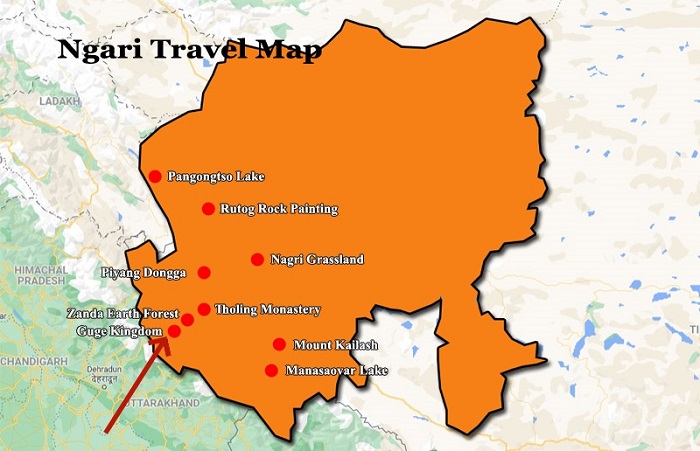
Ngari Travel Map
When Guge Rose: A Short Historical Timeline
Guge’s history is woven into the larger story of Tibet after the ninth century, when the central Tibetan empire fractured. Out of that fragmentation, regional powers rose. A royal lineage established control in the far west of Tibet and, by the tenth century, a power center emerged that would expand, patronize Buddhist art, and build monasteries and palace-fortresses on strategic hills.
Over the following centuries the kingdom grew and adapted—its rulers engaging with neighboring realms and varying religious influences, from indigenous Bon to the revival of Indian-style tantric Buddhism. Through the Middle Ages Guge flourished: its temples were richly decorated and its wall paintings and sculptures absorbed influences from India, Kashmir and Central Asia. At its greatest extent, Guge’s influence stretched across the plateau and into neighboring borderlands.
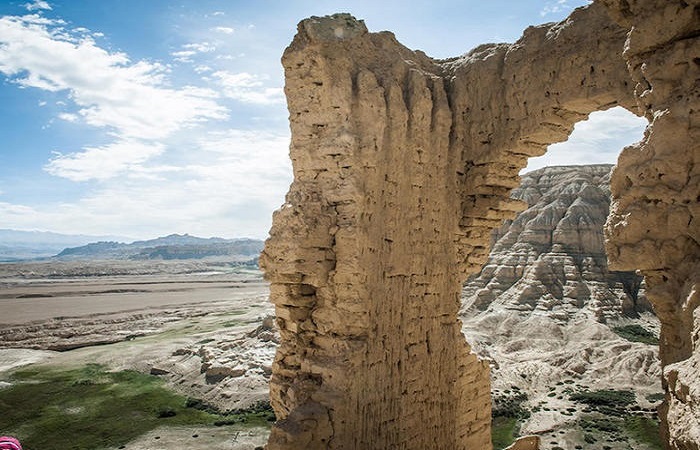
How the Guge Kingdom City Was Laid Out?
One of the most striking things about the site is its layered plan that mirrors the social order of the kingdom:
- Upper Tier (Palace): At the summit stood the royal palace complex — a fortress-like cluster of rooms and halls that once offered governance and ritual authority. The palace’s layout and surviving spaces still point to an elite architectural style distinct from the settlements below.
- Middle Tier (Monastic Complex): Midway up the slope are the temples and monastic dwellings: chapels with remnants of painted murals, small stupas, and monk quarters. Among these are better-preserved sanctuaries once used for ceremonies and scriptural study.
- Lower Tier (Residential Quarters): The base of the hill contained the dwellings of ordinary citizens and artisans. Excavations have revealed hundreds of rooms and passageways, though most are now reduced to earthen walls and foundations. These lower layers speak of a bustling urban life that supported temples, administration and trade.
Tunnel-like passageways and staircases once linked the tiers, forming a fortified living citadel integrated intimately into the loess hillside. Walking the ruins today, you sense the vertical social order and how architecture served both defense and spiritual separation.
Guge Kingdom Murals, Sculptures and the Colors of a Forgotten Court
Despite centuries of weathering, some of the Guge murals and sculptures survive in fragments vivid enough to reveal the kingdom’s artistic sophistication. Frescoes in temple niches depict Buddhist deities, narrative panels and courtly scenes. The style is distinguished: delicate figural designs, rich pigments and iconography that show exchanges between Indian and Tibetan artistic traditions.
Where pigments remain, they sparkle with the same ochres, lapis-like blues and vermilions that would have once animated sanctuaries. Sculptural remnants—some still partially intact—offer clues to the local sculptors’ skill and the patronage that supported such religious art. For travelers and photographers, the ruins are not simply a ruin site but an open-air gallery that illustrates a high point of Tibetan religious and courtly expression.
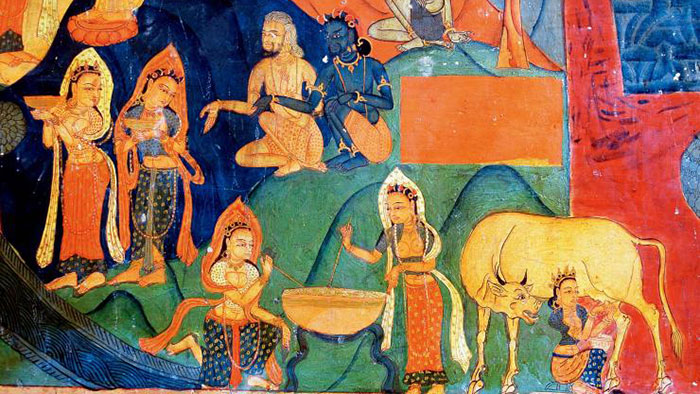
Guge Kingdom Murals
The Vanishing: Why Did Guge Collapse?
One of the most fascinating mysteries of Guge is how a city that supported tens of thousands in its heyday could be abandoned. Historians and archaeologists have proposed several intertwined reasons:
- Military conquest: Accounts suggest that neighboring powers, including Ladakh, invaded the region during the early modern period. Siege, capture and the forced removal or execution of the royal family are among surviving narratives.
- Ecological decline: The local environment changed over the centuries. Rivers that once supported extensive irrigated agriculture reduced in flow; soil erosion and desertification took a toll on the oasis-like pocket that sustained the city. Reduced agricultural yields could have made the site unsustainable.
- Political fragmentation: As central authority shifted across the plateau and new political formations rose, peripheral kingdoms like Guge faced diplomatic isolation and rising pressures which weakened them internally.
Today, the ruins are a mixture of human scars and geological erosion—mud-brick structures that weather slowly into the loess hillside. Though debate continues among scholars, the mystery only deepens the site’s allure.
Best Time and Season to Visit Guge Kingdom
For most international visitors, the window to visit Guge extends from late spring through early autumn. The high-altitude climate here is most forgiving in the summer months, when temperatures are milder and service options (lodging, local tour support) are most reliable. Dawn and dusk are the magnetizing moments to photograph Guge: morning sun floods the ridge with gold and reveals the three-tiered silhouette, while sunsets glaze the soil forest and the ruins in warm, cinematic tones.
Because Ngari and Zanda lie at high elevations and can require long road travel from airports or ground hubs, allow acclimatization time. Many itineraries combine Guge with visits to sacred lakes and other western Tibetan highlights—this region rewards a slow, contemplative travel style rather than a rushed “tick-the-box” approach.
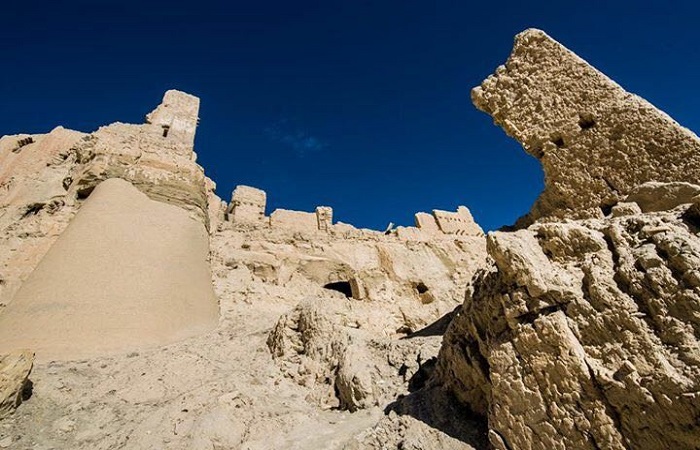
How to Get to Guge Kingdom?
Reaching Guge typically involves traveling to Ngari (Ali) region hubs such as Gunsa (Ngari Gunsa Airport) or driving westward from Lhasa by road. Flights to Ngari shorten travel time significantly, followed by a scenic but lengthy drive to Zanda and the Tsaparang site. Many travelers also combine the ruins with a visit to nearby Tholing Monastery, the Zanda soil forest, and the route to Mount Kailash for a broader pilgrimage-feel itinerary.
Because roads in western Tibet can be long and remote, most visitors join small-group tours or arrange private guides with local experience who are familiar with permits, local culture and safe acclimatization practices. Your tour provider will normally include transfers, national park or cultural-heritage entrance arrangements, accommodation and a local guide.
Zhada Earth Forest – A Must-See in the Guge
No visit to Guge is complete without stepping down into the nearby Zanda soil forest. These otherworldly earth pillars and badlands form when loess and alluvial deposits have been carved into spires by wind and water. At sunset, the soil forest catches the low light and becomes a sculptural landscape of gold and shadow—ideal for landscape photography and contemplative walks. Many itineraries time their visits for Guge sunrise and Zanda sunset for maximum dramatic contrast.
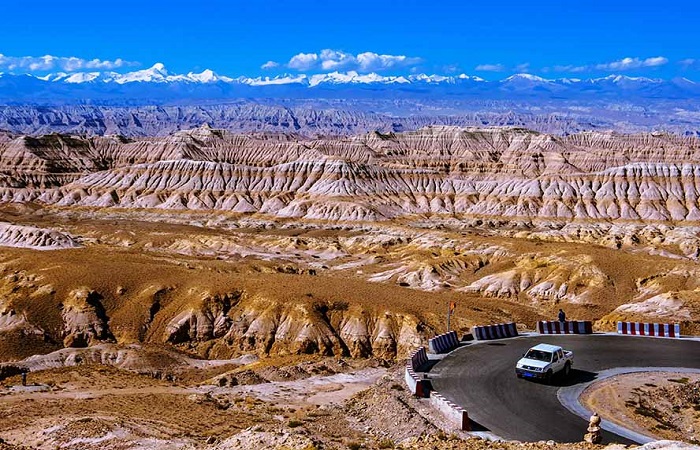
Zhada Earth Forest
Photography and Cultural Etiquette in Guge
Guge is a photographer’s dream, but please respect the local culture and fragile art. Interior temple spaces may be restricted; flash photography can damage pigments; and some areas are conserved and require visitors to keep a respectful distance. Dress modestly at religious sites (cover shoulders and knees), ask before photographing locals or their property, and follow guidance from local guides and site staff.
Bring a torch for some of the low tunnels and interior chapels; sturdy shoes and sun protection are must-haves; and a good zoom lens will help capture details of murals high on cliff faces. Above all, move slowly and allow the silence of the place to sink in.
The Guge ruins are fragile: earthen architecture, delicate murals and centuries of exposure mean conservation matters. Travelers can help preserve the site by following designated paths, avoiding touching painted surfaces, and supporting local conservation efforts (for example by choosing licensed guides and paying rightful entrance fees). Sustainable tourism in this remote region also helps local economies and ensures that future generations can experience Guge’s quiet grandeur.

Guge
Practical Tips and Packing List
- Altitude: Prepare for high-altitude conditions. Allow time for acclimatization, stay hydrated and consider travel insurance that covers mountain rescue or health needs.
- Clothing: Layered clothing, windproof jacket, hat and gloves for chilly mornings and nights.
- Footwear: Sturdy ankle-supporting hiking shoes for uneven ground and tunnels.
- Gear: Torch/headlamp for interior chapels, spare camera batteries (cold drains power), and a zoom lens for mural detail.
- Respect: Carry a scarf to cover shoulders when entering religious sites and always follow guide instructions.
Why Guge Should Be on Your Tibet Itinerary
Guge is more than a ruin — it’s a narrative: of empire collapse and artistic revival, of high-altitude ecology and human tenacity. For travelers seeking profound landscapes, layered history and a taste of real Tibetan culture away from busier pilgrimage routes, Guge is singular. The combination of sunlit mud architecture, surviving religious art and the haunting quiet of the Zanda plateau makes visiting here feel like stepping back into a dramatic and intimate moment of Tibetan history.
China Dragon Travel – How We Help You Reach Guge
If you would like a professionally organized trip to Guge, China Dragon Travel offers guided itineraries across western Tibet, including airport transfers, local guides familiar with Tsaparang and Zanda, comfortable local accommodations, and assistance with permits. Whether you want a photography-focused sunrise tour of the ruins, a cultural deep-dive with monastery visits, or a multi-day Ngari circuit including soil forests and sacred lakes, experienced local guides can craft a safe, rewarding itinerary suited to international travelers.




